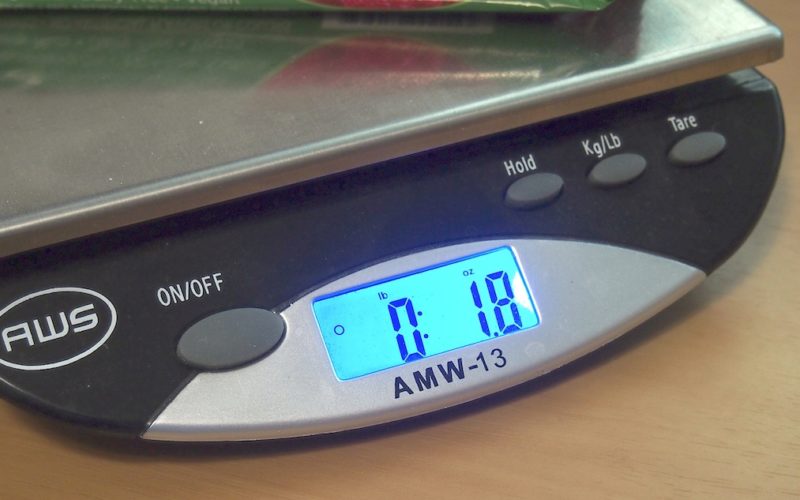
Less Weight = More Fun
Einstein came up with E=mc2. I came up with Less Weight = More Fun. It’s my legacy. While perhaps not as significant as what Einstein came up with, mine is clearly more fun.
There are lots of articles out there about how to cut the weight in your pack, but targeting those of you that are getting back into backpacking after a 20 year vacation, here are my Top Ten Tips based upon 35 years of mistakes, er, uh, I mean 35 years of experience. Yeah, that’s it.
1. Start with trying to get the total weight of your tent, backpack and sleeping bag down to ten pounds or less. (You Ultra-Super-LightWeight guys — don’t start. You can have my readers after they’re done with me.) Ten pounds. It’s a good first step. Even less is better, but a great first step.
2. Weigh everything. Write it down. Put it in a spreadsheet.
3. Cut ounces, not pounds. If you save two ounces on eight items, you’ve just dropped a pound. Oh sure, focus on the low hanging fruit of tent, sleeping bag and pack, but after you’ve dropped the big bucks to deal with those items, look towards cutting lots of small ounces rather than the big kill. For example I found what I thought was the best camera for the least weight (the Olympus E-PM1. But the new Panasonic Lumix GM1 is looking pretty good, and lighter.) I cut 7 ounces from my water filter set-up when I bought the Platypus Gravity Works. I kept shaving ounces off of my pillow set-up (this is a non-negotiable comfort for me.) I traded my sunglass case for a recycled Crystal Lite container and saved two ounces. You get the idea.
4. Over time I found the biggest savings in weight was from my clothes. Clothes are surprisingly heavy. I shaved four ounces from my “Gore-Tex” jacket. I shaved 5 ounces from my fleece mid-layer. I lost four ounces on my outer insulation layer. I saved two ounces by going with lighter gloves that are just as warm, but maybe not as durable. But I’m only keeping my hands warm with this pair, not wielding an ice axe. Plus, the old adage about wearing layers is true. You can dress for every weather condition
5. Weight everything. Did I already say that? You can’t know how much you can save until you know what you got.
6. Only bring what you need. Don’t bring a 4oz tube of sunscreen for a weekend trip. I’m not going to get into a battle of words about how much sunscreen you should apply, but rule of thumb on a beach is 1 oz. per application. I use about 0.5 ounce a day in the Sierra, but my main torso is covered. I did nine days on the Muir Trail on about 5-6 oz. of sunscreen and I didn’t get burned at all. I bring the little 1.5 oz. Coppertone tubes and refill them to the very brim from the big tube when I get home. The small tubes are also nice because you can keep the “tube of the day” handy in a pocket or waistbelt pouch. The 4 oz. tube is more cumbersome. The 1.5 oz. tubes allow you to bring as many as you need for the length of your trip.
7. Only bring as much food as you’ll need. Everyone is different, but I’m not that hungry for the first 3-4 days on the trail. I can get by on 1.5 lbs of food a day, knowing I’m burning some fat. About Day Five I start looking at the sun and seeing a big egg dripping in butter and chipmunks start to fear me. A pound of fat is worth 3,500 calories, so if I have a deficiency of 1,000 calories a day, I’ll lose a pound every 3-1/2 days. I try very hard to walk out of the wilderness with only a little bit of GORP and my two emergency packs of oatmeal.
8. Learn how much gas you use. I weigh each canister before I leave, and when I get back, so I know how much fuel I used. My results keep pointing to 0.9 oz per day (using a Snowpeak stove — JetBoils are much more efficient, but heavier,) and I’m mindful to not waste a second’s worth of fuel while out there. If I’m making coffee (Starbuck’s VIA is the best I’ve found so far and I’ve tried nearly everything) I pour the water into my cup, then pour THAT into my pot so I’m only heating the water I’m going to use. Heating water that only sits there and cools is a waste of fuel. Plus, when you weigh your canisters when you get back, you know how much fuel you have left in that canister, which I write on the bottom with a Sharpie. I take an annual “Last trip of the Year” where I take all my orphan fuel canisters from the summer and try to use them up.
9. Visualize a Gallon of Water. A gallon of water weighs 8 lbs. You know what a gallon of water looks and feels like. Lose 8 pounds and you won’t have that gallon of water lashed to the outside of your pack. I know it’s hard to lose weight in this world of pressure, deadlines and fast food, but think of that gallon of water lashed to your pack. Do you really want to carry it over that pass?
I find that cutting weight from my pack is a long term project. It costs money to buy something lighter. But over time I save an ounce here or two ounces there and that adds up. The secret is to weigh everything so you know what you’ve got to lose!